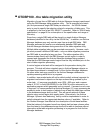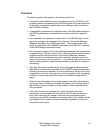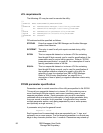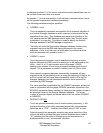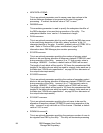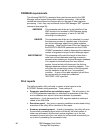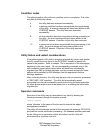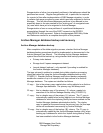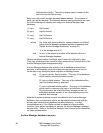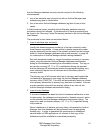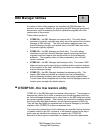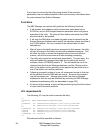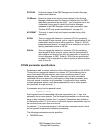
88 DB2 Manager User Guide
StorageTek Proprietary
Further executions of the table migration job for the appropriate DB2 table
may subsequently be performed as normal.
Data management processing
Following successful execution of a table migration process, a number of
follow-up activities may be required in order to complete the management of
migrated and unmigrated data. These activities consist of the following:
• DB2 table backup and recovery
• DB2 table reorganization
• Archive Manager database backup and recovery
DB2 table backup and recovery
There is no change required to backup and recovery processing procedures
for tablespaces containing tables which have been enabled for DB2 Manager
migration. Image-copies should be taken normally as for non-enabled
tables. However, as the size of the tablespaces used for storage of tables
may now have been substantially reduced, the length of time taken for image-
copy processing will be reduced by a corresponding amount.
Restore of a tablespace containing a migration-enabled table is performed in
an identical manner to that of a tablespace containing a non-enabled table.
DB2 will restore the 18-byte stubs containing information about migrated
rows, as well as restoring non-migrated rows, to the condition they were in at
the time the image-copy was taken. The stubs contain all the information
necessary to access migrated rows from Archive Manager.
DB2 database reorganization
Tables which have been enabled for migration processing must be defined in
a partitioned tablespace (see “Enabling a DB2 table for migration processing”
on page 75). This tablespace will have one partition for exclusive storage of
migrated row stubs, and one or more partitions for storage of non-migrated
rows.
Database reorganization processing should not
be performed on the partition
containing the migrated row stubs, unless absolutely necessary.
Reorganization of this partition will cause all migrated rows to be retrieved
from Archive Manager. If Archive Manager objects are held on tape storage
only, this is likely to generate a substantial amount of tape activity and could
take an excessive length of time to complete. However, all rows stored in
this partition will be a fixed 18 bytes in length. In this case, deletion of rows is
not likely to cause fragmentation in the tablespace, as deleted space can be
re-used as required. The requirement for reorganization of this partition is
thus not mandatory.



